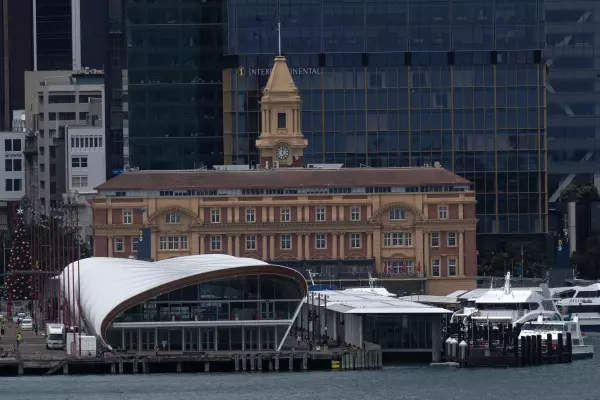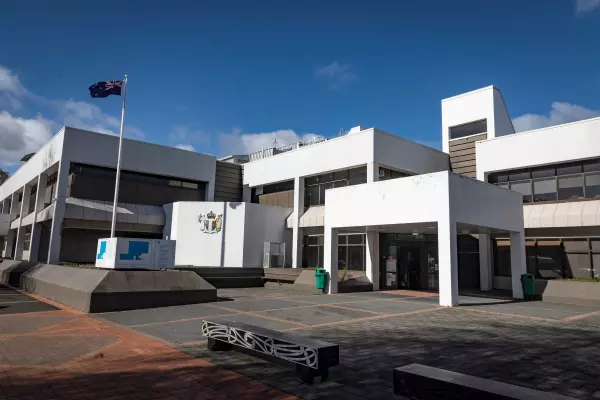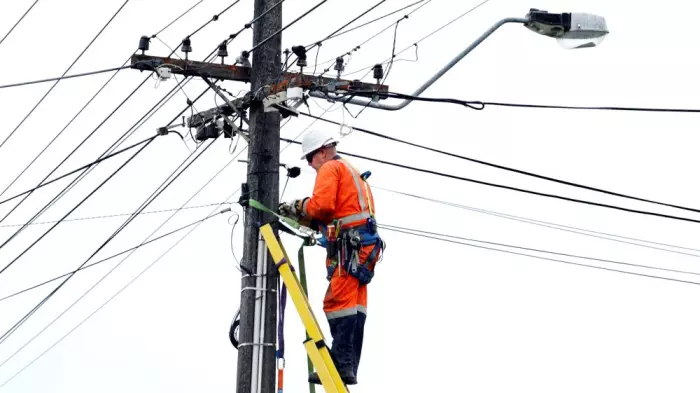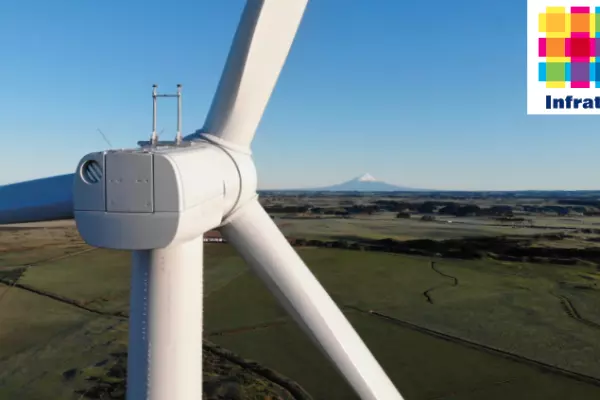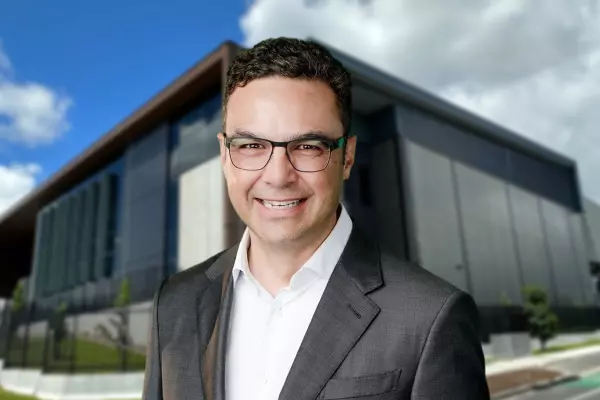Serious allegations have been made about the Christchurch stadium’s governance, budget and systems by the project’s former director in a newly unearthed report.
The report outlines several "critical issues", including concerns about the project budget when it was first tendered. It also suggested the project be "re-set" so it could be delivered successfully.
BusinessDesk obtained the report by the former project director, Kris Thomas, using the local government version of the Official Information Act.
Despite the importance of the issues raised in the document, it was not passed on to Christchurch city councillors, meaning they were ignorant of its contents when they voted last August to increase the project budget by $50 million to $533m to ensure the arena, now called Te Kaha, had 30,000 seats.
Since then, the project has suffered a further $150m cost escalation. The council is currently consulting the public on whether it should move forward with a new budget of $683m, rescope the arena, or stop it altogether.
Christchurch City Council chief executive Dawn Baxendale and Barry Bragg, chair of Te Kaha Project Delivery, which was set up by the council to deliver the project, both provided statements to BusinessDesk disputing aspects of the report and affirming their confidence in the current arrangements.
Thomas ceased to be involved in the project last July after his role was disestablished by mutual agreement. He sent his outgoing project director’s report to board members at Te Kaha Project Delivery, known at the time as CMUA (Canterbury Multi-Use Arena) Project Delivery, on July 23, 2021.
Budget issues
The budget for Te Kaha was initially $473m ($483m if land remediation is included), to be met with $253m from the council and $220m from the government.
The investment case needed for the project to go ahead, which was approved by the council in December 2019, recommended a covered, 25,000 seat stadium as being achievable within the budget. The council noted the preferred option allowed capacity for a further 5,000 temporary seats in the future.
A proof of concept design was done for the investment case. In his report, Thomas alleged the council project team thought the early stages of the contract with the successful contractor would involve them ratifying and developing the proof of concept design. The maximum design and construction (D&C) contract price was based on the proof of concept estimate design and construction costs, he said.
A request for proposals (RFP) was issued a year later in October 2020. Thomas alleged the maximum price wasn’t revalidated against the finalised project brief, current market rates or other factors.
“This decision was made in the light of the covid-19 pandemic, and despite the risk register identifying a 'very high' budget shortfall risk for project brief misalignment, affordability review assumptions, market escalation, and foreign exchange movements,” he said.
Later in the report, Thomas concluded “it is apparent that the project was tendered with a significantly misaligned project brief and nominated maximum D&C contract price”, meaning it was prone to cost escalations.
Asked about the budget, Baxendale said the council had been conscious of the budget and realistic about what it could build.
An affordability review was carried out in November 2019 to demonstrate to the government that an affordable option could still be constructed within the $473m budget.
Baxendale said as part of the request for proposal for the D&C contract, tenderers were advised the arena project team would be reviewing with them potential changes identified as part of the review.
“Tenderers were also asked to comment on the adequacy of the nominated Design & Construct maximum price as part of their tender submission.”
‘Aggressive’ design process
Thomas started in the role after the RFP went out, in January 2021. As he wrote in his report, it meant he couldn’t influence the RFP documents.
“There was also insufficient time available to establish project resources and systems prior to the intensive RFP evaluation process and commencement of the pre-contract services stage (the design stage of the contract before the contractor puts in a final bid for the full D&C stage),” the report said.
The Kōtui consortium, led by Australian stadium experts BESIX Watpac, was awarded the contract to design and build the arena in March 2021.
In his report, Thomas characterised the planned eight-week design stage plus two weeks for verification as “aggressive”.
“The risk associated with the aggressive concept design programme was known and regularly discussed with BESIX Watpac,” he said.
“Despite their affordability review indicating budget issues, BESIX Watpac did not wish to pursue a programme extension to allow for more robust review of design and cost options.”
The ensuing concept design was over budget, and “BESIX Watpac advised the project brief to not be achievable”.
Councillors were briefed on the blowout in June last year. In July 2021, they voted on a revised 25,000 seat option – a decision that was reversed in August when the council voted for an arena with 30,000 seats following a public backlash.
Thomas’s report showed a range of alternative options were presented to the council last year, including the investment case-compliant option of 25,000 seats through to a minimum capacity option with 20,000 permanent seats.
It also listed the “five highest rated risks to achieving budget” identified by BESIX Watpac “all of which had or would eventuate”.
- Competition, market and pandemic influences
- Roof and bowl structure design
- Scope creep
- Escalation and exchange rate fluctuations
- Programme
"In summary, the project is significantly underfunded at the concept design stage and requires additional funding for the shortfall in the D&C stage budget (subject to value management and de-scoping) and contingency budget,” Thomas said.
“Appropriate measures are also required to address market escalation risk above 3%.”
Disputes over control
The report makes it clear that, even after the Kōtui consortium’s appointment, there was disagreement between the council and Te Kaha Project Delivery about where responsibility and delegated authority should lie.
The company was intended as an independent delivery agent, however Thomas said “council executive[s] elected to instead directly appoint and retain the role of principal for all consultant and contractor appointments and in effect remove CMUA Project Delivery Limited from the chain of authority”.
He also alleged the letter of expectations from the council failed to provide “any delegated authorities”, with the effect of disempowering the company and removing “the independent governance and associated benefits of the delivery entity”.
It’s understood the first board chairman, Murray Strong, resigned, in part, due to these issues.
Thomas also raised issues with some of the council systems and processes being used by the company. Council financial systems were “not suited for major project budget and cost control”, he said, no benefits management plan was prepared and, at the time, there was “no risk and issues management system in place”.
The recommendations
Thomas sent his report a day after city councillors, reacting to the budget overrun, voted to proceed with a 25,000 seat stadium (a decision that was overturned shortly afterwards due to public pressure).
Among his recommendations on what to do to make the project a success, Thomas advocated for a “re-set”, including revisiting the concept design for the 25,000 option endorsed by the council.
He also suggested the following:
- “Strip-back the project brief to defined fundamental requirements only …”
- “Re-visit the investment case to confirm the preferred scheme option viability and associated fundamentals for seating capacity and corporate offering against other scheme options;
- "Re-visit the project budget allocations and validate the adjustments proposed by the [council] response team …”
- “Develop and implement a funding and sponsorship strategy capable of funding the additional $40-50m still likely required for the current preferred scheme option (25,000 seats) ..."
- “Approach crown to address the matters of budget, programme and key deliverables… and seek joint sponsor approach to managing escalation risk and agreement to deviate from the crown funding agreement”
For the preliminary design to work, Thomas said it needed to start with an aligned and verified concept design, project brief and budget estimate.
“Proceeding directly to preliminary design for the preferred [25,000 seat] option is not recommended as there is a high risk of scope vs budget issues remaining and/or reoccurring and in effect the project remaining in a concept design phase with significantly increased sunk costs.”
Council on the defence
In a statement accompanying the release of the report, Bragg, who was appointed chair of the Te Kaha Project Delivery board last August, said the first thing he did following his appointment was conduct a review of the project governance and structure.
The review identified a number of issues, which Bragg said he and his fellow board members addressed by putting in place new processes and systems. These included a new change management process, cost planning meetings and a review of the risk register.
The council also commissioned its own review of the project governance. Following both reviews, Te Kaha Project Delivery was reconfirmed as the independent project governance entity for the arena.
“With the board’s agreement, the company’s constitution was amended and new delegations and authorities were put in place to ensure there was no confusion about roles and responsibilities moving forward,” Bragg said.
“I dispute many of the claims made by the former project director for CMUA Project Delivery Limited. Any valid issues have been addressed. I am confident we have the right governance structure, the right processes, and the right team in place to deliver this project.”
Baxendale, the council chief executive, said “many of the assertions” made in the report were “not factually correct”.
“I am satisfied any legitimate issues raised in the former project director’s report have been addressed by the board,” she said.
“The council has the utmost confidence in the board and its current chief executive. We have a very constructive working relationship with the board and Treasury and we are all committed to getting the best outcome for Christchurch and Canterbury.”
The report that didn’t exist, until it did
BusinessDesk first requested all reports submitted by Thomas in the month before or after his departure last year. The outgoing project director’s report was not included, although the council provided other regular reports submitted by Thomas to the board.
In response to a second request last month, the council said the information “requested does not exist or cannot be found”.
It provided the report late Thursday. Why? Because it was provided to the council by the former project director on June 21, the council said. BusinessDesk had asked Thomas to confirm whether the report existed. He declined to comment.
In response to questions from BusinessDesk about the circumstances of the report’s appearance, the manager for official information at the council, Sean Rainey, said the council had released previous Te Kaha Project Delivery board reports as they were held by the council and formally provided to the board.
Rainey said the outgoing project director’s report had been sent from a home email, not a council or Te Kaha Project Delivery email.
“We can confirm it was sent to individual board directors' personal emails – not to the board secretariat or council officers. Therefore the report was not held in our system.”
It’s unclear if the council asked relevant board members to search their emails in response to the request from BusinessDesk.
The council was previously taken to task by the Ombudsman in 2019 for not being transparent.
Baxendale said the report was not provided to councillors last year because at the time the council wasn’t aware of it.
“While the board did not share the report with the council at the time, we have worked collaboratively with the board to support them to put in place the right governance structure, the right processes, and the right team in place to deliver this project,” she said.
“As I have previously stated, the council has total confidence in the board, the new chief executive and the project team they have put together.”






